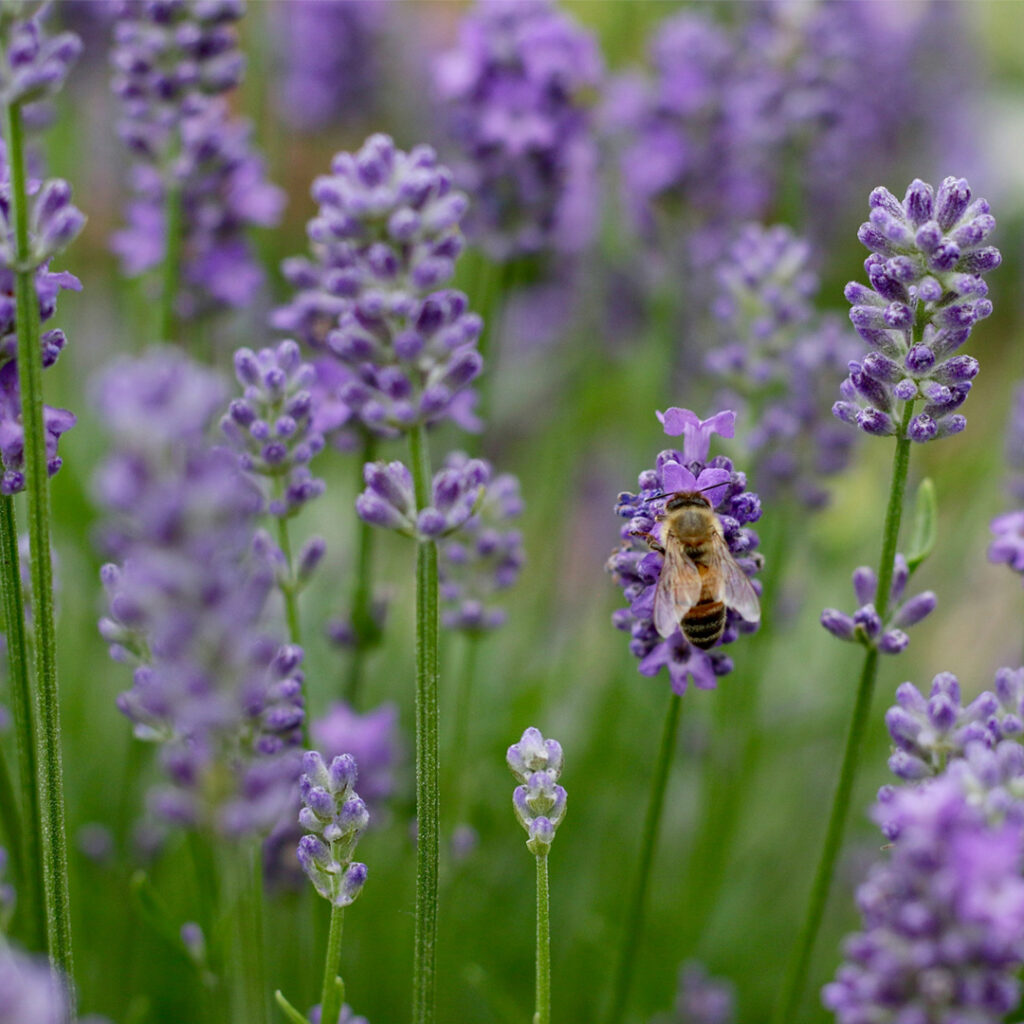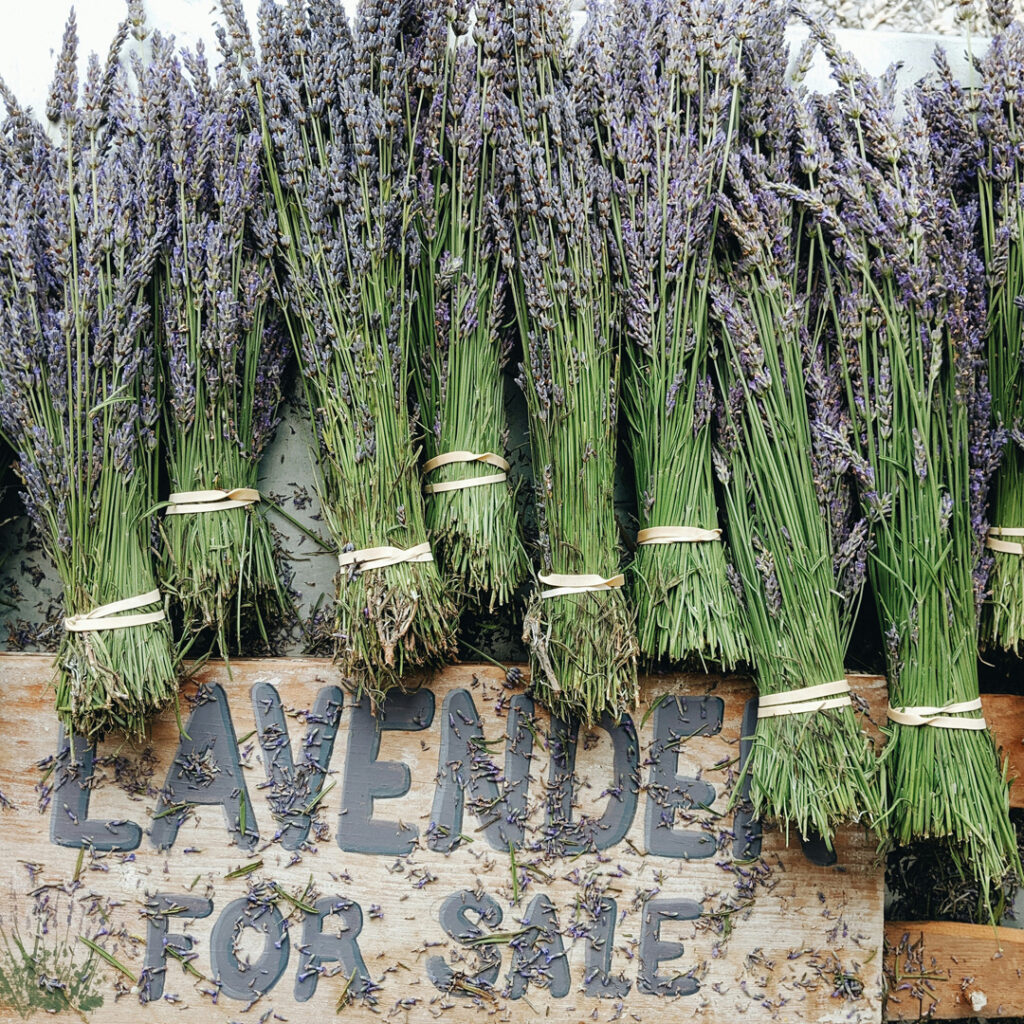
Lavender is one of the most popular herbs grown in Canada. It’s known for its soft colour, rich scent, and many uses. But not all lavender is the same. Two of the most common types are French and English lavender. Both offer beautiful florals and potent fragrance, but they differ in strength, purpose, and growing needs. Choosing the right variety matters, especially if you plan to sell plants or products. This guide will help you decide which type fits your goals, whether you grow for scent, looks, or climate suitability.
Looks and Fragrance
The first difference most people notice when looking at French vs. English lavender is their appearances. English lavender, known as Lavandula angustifolia, produces neat, compact plants with narrow green-gray leaves. The flowers are rich purple or blue and grow in tight clusters. English lavender has a classic look that gardeners love. It fits well in borders and garden beds, and it stays tidy as it matures.
French lavender, or Lavandula dentata, grows larger and looser. It often has broader leaves with a slightly serrated edge and blooms that look frillier. Its purple flowers appear on longer stems with decorative petals at the top. This variety grows a little unruly as it ages and can have stems as long as a fountain grass.
Fragrance is another noticeable difference. English lavender has a strong, sweet aroma that people recognize immediately. It’s the traditional scent used in soaps, oils, and sachets. The fragrance lasts even after drying, which makes it popular for crafts and home products. French lavender has a lighter, more resinous smell. Some describe it as herbal or slightly medicinal. It’s pleasant but less intense than the English type.
For anyone focused on selling lavender-based products, scent often matters the most. English lavender holds its aroma longer and works better in dried arrangements or sachets. Its essential oils are also considered higher quality for personal care items. French lavender may look striking, but it doesn’t deliver the same long-lasting fragrance. If your customers care more about scent than show, English lavender is the better choice.

Use and Growing Purpose
When deciding whether to grow French or English lavender for sale, it’s also worth thinking about how you’ll use or market it. English lavender is the all-around performer. It works well for culinary, cosmetic, and ornamental uses. The flowers and leaves are safe to use in baking, teas, and syrups. Many farms in Canada that list English lavender for sale also offer culinary blends. The flavour is strong and blends nicely with honey, lemon, or sugar.
English lavender is also ideal for essential oil distillation. Its oil content is high, and the scent is stable after extraction. This makes it a favourite among growers producing oil for perfumes or soaps. If your focus is value-added products, English lavender gives you the most options.
French lavender, by contrast, leans more ornamental. Its softer scent and showier flowers make it a great choice for display gardens, public spaces, or landscape design. It can bloom earlier in warm climates and adds colour when other plants fade. However, its oil is less valuable and not suited for culinary use.
Another factor is longevity. English lavender can thrive for years if pruned and cared for properly. It’s a hardy perennial that grows well in cool, dry climates (zones 4-5). French lavender grows faster but may not last as long in colder areas. It can struggle to survive winter without protection (zone 7+).
If you’re growing lavender in regions with harsh winters, English lavender offers better reliability. It handles frost and low temperatures with less stress. French lavender prefers milder conditions and benefits from indoor overwintering or sheltered planting. Your climate can therefore determine which type delivers more consistent sales and returns.
Contact us Today About Our English Lavender for Sale!
Both French and English lavender bring beauty and value to your garden. But when it comes to growing lavender for sale in Canada, English lavender stands out. It’s hardy, fragrant, and versatile. It works for culinary use, oil production, and home décor. It thrives in Canada’s cool, dry climate and rewards consistent care.
French lavender can still play a role, especially for farms in warmer areas or those that sell decorative plants. But for lasting scent, dependable growth, and strong resale appeal, English lavender delivers more.
If you’re looking for high-quality English lavender for sale, contact us or browse our online store!
FAQ About French Vs. English Lavender for Sale
- What makes English lavender better for cold climates?
English lavender can handle frost and freezing temperatures better than French varieties. It’s naturally hardier and longer-lived in cooler regions.
- Can French lavender survive winter in Canada?
It can, but only with protection. Grow it in pots and bring it indoors when frost starts, or cover it in mild areas.
- Is English lavender safe to use in cooking?
Yes. English lavender has a mild, sweet flavour and is safe for baking, teas, and syrups. French lavender is not used for food.
- Which lavender type produces better essential oil?
English lavender produces higher-quality oil with stronger, longer-lasting fragrance. French lavender oil is lighter and less concentrated.
- How long does English lavender live?
With proper pruning and drainage, English lavender can live up to ten years. Regular trimming helps keep it productive and healthy.
